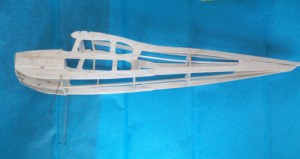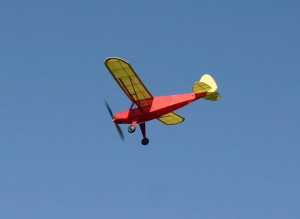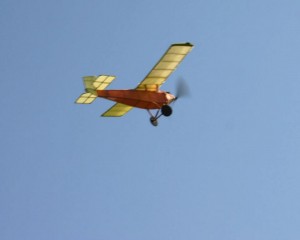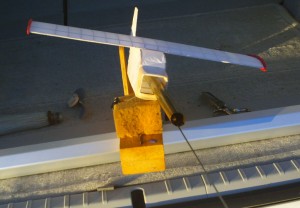by Bill Kuhl ScienceGuyOrg
I am building more scale type airplanes the last couple of years, these planes are normally more challenging to build and to adjust properly. To me it is worth the trouble because they are so cool to watch in flight.
Before building a plane of this type I would suggest that you are comfortable building and successfully flying a “dart-type” or Squirrel airplane and then a ROG with curved ribs. Starting with a scale type plane from the start could be too frustrating and it might not look or fly very well. For the scale plane to get decent duration you need to be able recognize what is heavy and how to build it lighter. You need to learn how to handle delicate structures without constantly breaking the structure.
Getting the proper Center of Gravity location in a model that looks like a full-scale airplane that has a heavy motor in front – hence a short nose, is often not easy without resorting to added ballast in the nose. The rubber model just has a propeller in front and much of the rubber motor extends behind the Center of Gravity. I am learning to build the tail surfaces as light as possible to avoid adding weight to the nose.
Most of the kits that are mass marketed to hobby or craft stores will no doubt contain balsa wood that is too heavy. I like the challenge of figuring out what I can replace and change to make the plane lighter but it is possible to purchase kits that come with lighter wood and are designed to be lighter. If your finished plane is lighter it will not only fly longer it will be easier to adjust.

Too much balsa in this Cessna 180 fuselage, lighter structures are built from 1/16″ square stringers.
With a plane that has a full width fuselage and not just a balsa stick; comes the issue of the rubber motor breaking while winding and damaging the fuselage. The most common technique to avoid the problem is to use a “blast tube” which fits inside the fuselage but the rubber motor is wound inside of it. Another stiff piece of wire is attached to the winder on one end and the rubber motor on the other end, this allows you to wind the rubber to the back of the tube and get the blast tube off the rubber motor.
There are many more issues in building the scale type planes but I intended this to be an introductory article. Landing gear, struts, windshields, and more difficult covering are just a few of the challenges. When you do have success it can be a thrill to see a model that looks like a full-scale plane circling perfectly in a blue sky without a pilot and only a length of rubber for power.


